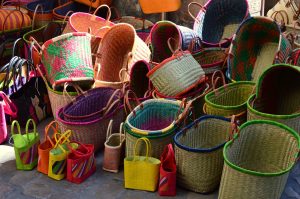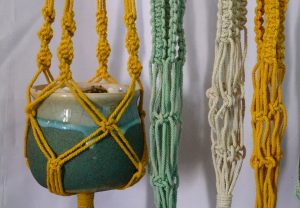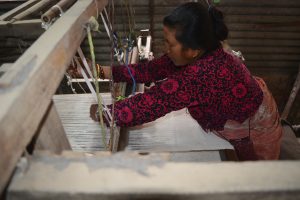At a conference in Japan, in 1983, Reeta Simha was clad in a Dhaka sari. When asked if the sari was her national dress and if it was made in the country, she said ‘yes, Dhaka is a part of the national dress’, but she did not have an answer on when her apparel was made. This uncertainty left her with guilt and embarrassment. Coming back, Simha wanted to work more efficiently on ‘national productions’ and endorse as well as promote them. Then, she started Aama Impex, in 1990.
Simha is the president of the Federation of Woman Entrepreneurs’ Associations of Nepal (FWEAN) since 2019 and under her leadership, women entrepreneurs are now learning skills, participating in capacity building and on how to promote, package and endorse their products. Being a woman entrepreneur herself, Simha talks to OnlineKhabar about the status, problems and possibilities of Nepali women entrepreneurs. Excerpts:
What is the FWEAN doing to help women entrepreneurs in Nepal?
The FWEAN is active in over 50 districts with 150 members in Kathmandu, and over 4,000 members overall. The federation trains, mentors, supervises women entrepreneurs technically, strategically, and financially. And when problems arise, the FWEAN actively advocates them for a better solution and their empowerment.
Has Nepal made any progress in terms of women’s involvement in entrepreneurship? Apparently, many women entrepreneurs still facing difficulties due to several stereotypes.
The urban women have definitely made the progress compared to the past. The number of women entrepreneurs who have been successful has also increased. And, their ideas have been worth acknowledging, in many ways.
The main problem is that women are overworked. Though women are not discouraged to work, given the social expectations, women are still expected to handle their homes and give time to the family. They are more involved in their homes, taking care of families and children, cooking, and cleaning whereas what the women entrepreneurs should be doing is to invest their time in their ventures and make progress. With the help of men, that would have been possible, but women are not getting that much-needed help.
What problems do you see among the women-led ventures today?
First, as I have already explained, is their time. Another is that they are always involved in only small and cottage industries. They have a small capital; their market is small; their product marketing knowledge is also low. Nepal has a lot of resources and if we can capitalise on them, we can earn from them.
At present, our biggest drawback is that we have been importing all the raw materials. Nepal has plenty of raw materials here for every kind of production. But, importing raw materials increases the prices of our products and our dependency on other countries.
The prices of our handicrafts are most misunderstood. The buyers need to understand that since it is handmade, it is bound to be expensive. Whereas the makers need to know how to evaluate the costing of the products, and also realise the need for good packaging and marketing of their products.
How have women entrepreneurs battled with Covid-19 and its impacts? What are the problems they are still facing?
The Covid-19 was a great deal for all women entrepreneurs; many businesses stopped completely. Due to travel restrictions, the businesses were hit further. We advocated and suggested the government come up with better financial aid plans, they have addressed it in the monetary policy but it has not been implemented.
They already had a lack of access to financial aspects of business, be it the capital fund or the loans. Plus, what we saw was that they had a lack of financial and marketing knowledge. So, with the USAID, during and after the lockdown, we worked with women entrepreneurs in their packaging, cashflow, and digital marketing to boost their business. We also gave them disaster risk reduction management knowledge.
What are the possible innovations that Nepali women entrepreneurs can get a competitive advantage with?
Textile is the sector where Nepal can get a competitive advantage. We have plenty of resources for natural fibres including cotton, allo (Himalayan nettle), Dhaka, felt, silk, and wool, etc. Other products are tea, coffee, jewellery, and sculptures.
Dhaka, pashmina, and felt are particularly in demand abroad. We can produce locally and export them all over the world. We have to work on our packaging, but the quality of our products is on par with the international standards. Nepali women entrepreneurs can get their very own niche market. Our past workshops with women entrepreneurs and expos have been proof of it.
Another product is honey. We already have businesses exporting honey, and we can increase the number as well as work in the packaging to capitalise more on this market.
Nepali women can get involved in the production as well as endorse their products themselves by wearing them and talking about them. Nowadays, to endorse products made in Nepal is a matter of pride, and women can gain even more confidence by endorsing products they have made, in their own country.



























